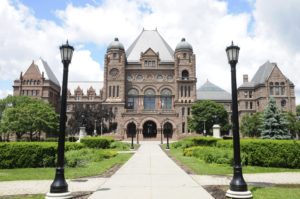Clean Energy Canada | Ontario Climate Consultation Asks the Right Questions on the “Most Critical Issue of Our Time”
February 12, 2015

The Government of Ontario released a consultation paper earlier today that frames up the opportunity and the challenge of tackling climate change in Canada’s most populous province.
The document is a first step toward fulfilling a central element of Environment and Climate Change Minister Glen Murray’s mandate: “lead the development of a new long-term climate strategy for Ontario.” The minister’s climate strategy is meant to help get the province on track for its 2020 target, and Premier Kathleen Wynne asked him to complete it this year.
Though very thin on specifics, today’s paper sets a high bar for Ontario’s future climate and clean energy agenda. Here’s what jumped out at us as we read through it:
- The government’s goal? A “healthy, prosperous province recognized as a world leader in climate solutions.”
- Again and again, the document asserts that a clean environment and a strong economy go hand in hand: “In fact, managing the risks of climate change is the only path to sustained long-term economic growth.”
- The paper asserts that Ontario “is well positioned to lead” in the fast-growing global clean energy market—exactly the right ambition for the province’s future, in our view. It contrasts “the old ways”—fossil fuels, subsidies that lead to carbon pollution—with a “new model of economic growth” based on clean innovation.
- The document doesn’t mince words about what’s at stake. Minister Glen Murray—correctly—calls the prospect of significant global warming “catastrophic” and labels climate change “the critical issue of our time.”
- The paper re-commits to Ontario’s existing 2020 and 2050 emission-reduction targets, but adds a longer-term goal: “strong carbon neutral communities, infrastructure, and energy.” That’s an important objective in line with the science; it’s also decades into the future. Luckily, the document brings it back to the present, asserting that getting there “requires immediate climate critical actions.”
- Every time I read a climate paper, I look for the word “urgency.” A government won’t really tackle this issue unless it sees cutting carbon pollution as a priority today. Ontario’s paper passes that test, stating that “the urgency of climate change means that all states and citizens must and can act now.”
The paper identifies four “climate critical” areas where Ontario will develop policies that should become the meat of its future climate strategy. Of those, the province’s clear commitment to put a price on carbon will likely generate the most attention.
The paper doesn’t officially close the door to any carbon pricing approach, and carefully describes the variety of mechanisms in place, both in Canada and beyond our borders.
But the province tips its hand in the questions it asks at the conclusion of the paper. There, Ontario sets a carbon pricing principle of “ensuring greenhouse gas emissions reduction certainty.”
Among market-based systems, there’s only one choice that meets the province’s objective, and it’s cap and trade. So it’s clearer than ever today that Ontario is headed towards the kind of carbon-pricing model Quebec and California have chosen.